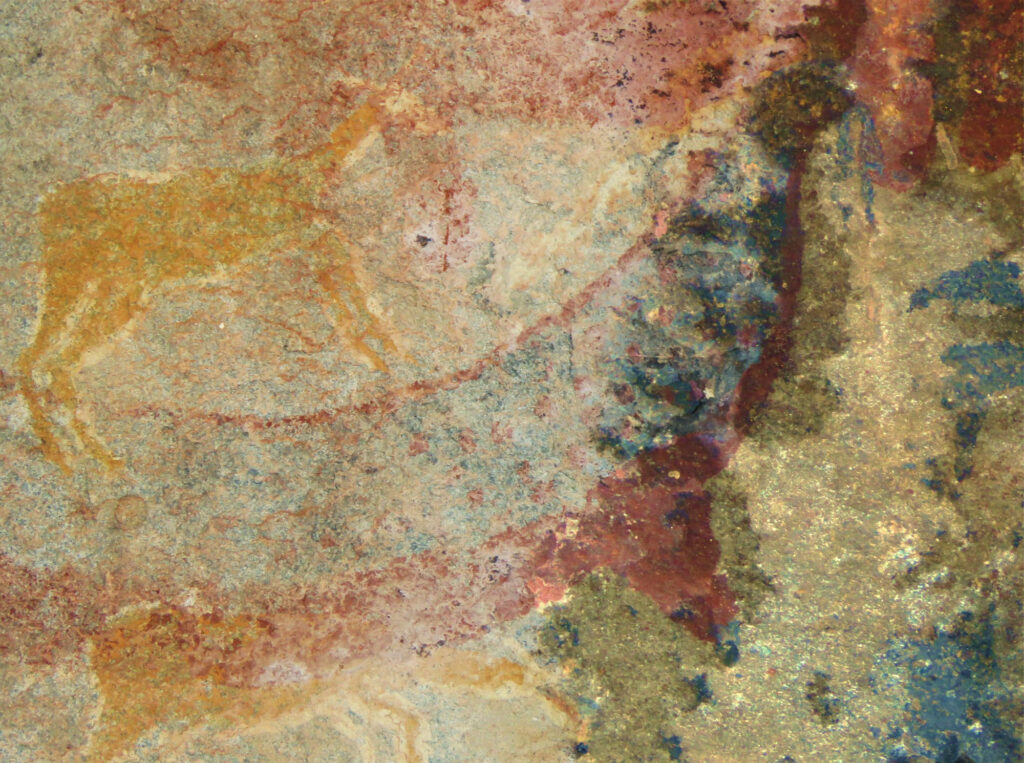JOHANNESBURG, SOUTH AFRICA—According to a Newsweek report, a new study of the Horned Serpent Panel, a rock wall at the La Belle France site painted by the San people at least 200 years ago, suggests that one of the images may represent a dicynodont, a therapsid that went extinct some 200 million years ago. The creature in the painting has a long body with downward-turned tusks, and does not resemble any animals known to have lived in the region between 1821 and 1835, when the panel was painted. Julien Benoit of the University of the Witwatersrand said that therapsid fossils are abundant and diverse in the Karoo Basin, where the Horned Serpent Panel is located, including 250-million-year-old fossils of dicynodonts found near the La Belle France site. “In many cases, their skulls are naturally exposed by erosion in spectacular ways, making them easy to find and collect, and their tusks are so conspicuous that their anatomy is not difficult to interpret, even to the untrained eyes,” Benoit said. He noted that the painting predates the first formal scientific description of a dicynodont by at least 10 years. “This brings a new perspective to the history of sciences and how we conceive ‘discoveries,’” Benoit added. If the San integrated fossils into their belief system, he continued, it could help to explain the imagery in some other San rock art, Benoit concluded. Read the original scholarly article about this research in PLOS ONE. For more on animal depictions in San rock art, go to "Tracking Ancient Animals."
